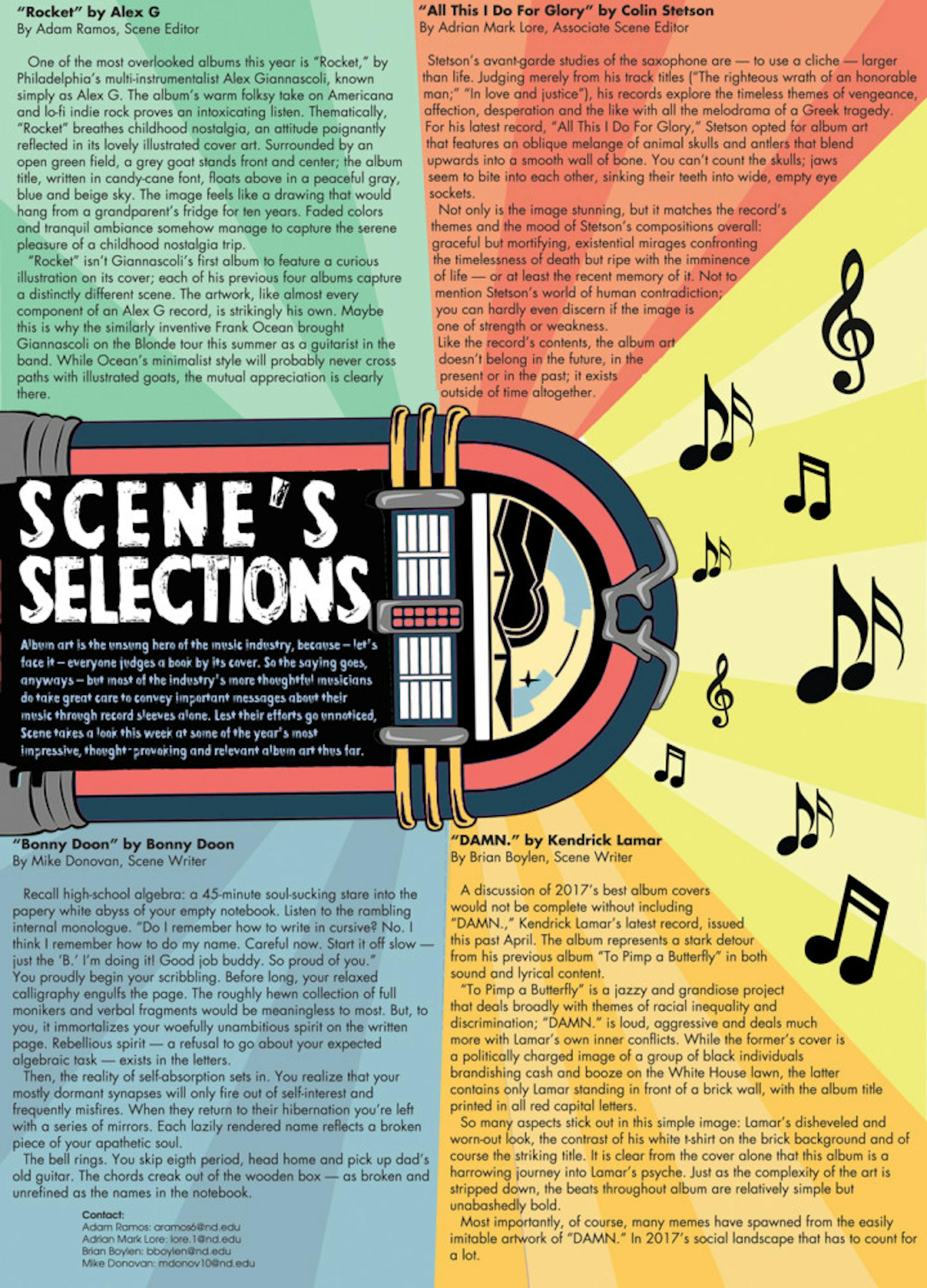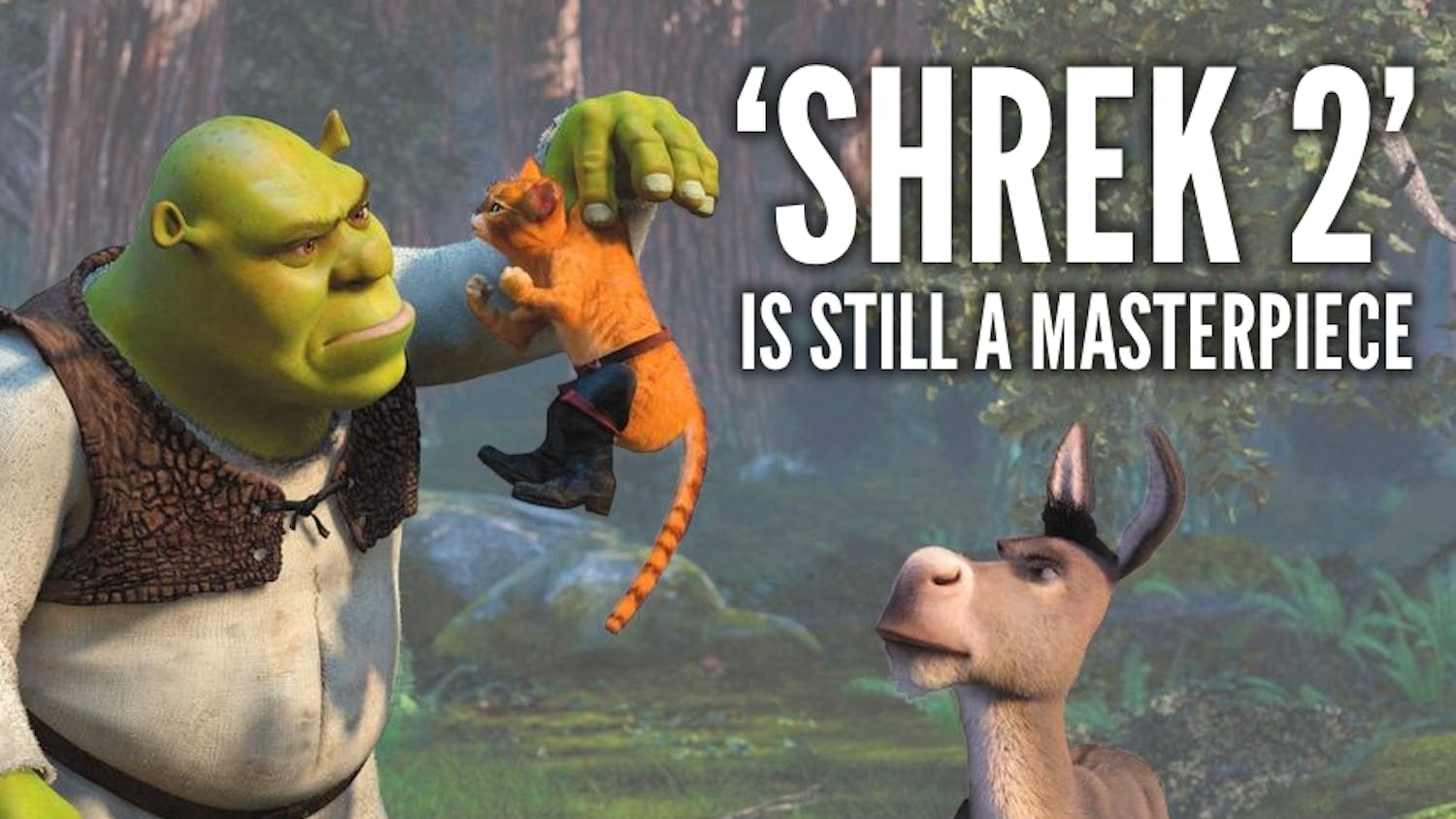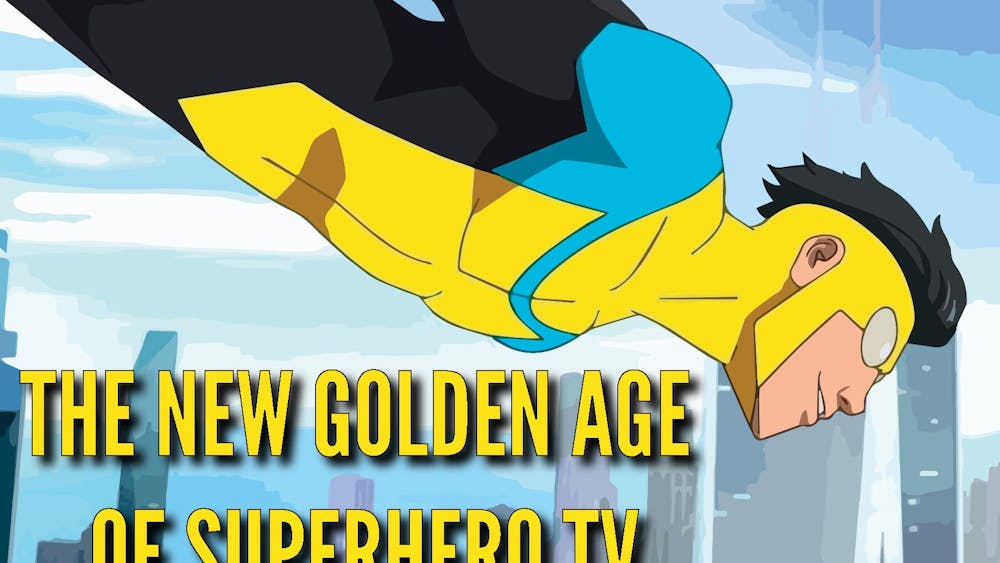
Album art is the unsung hero of the music industry, because — let’s face it — everyone judges a book by its cover. So the saying goes, anyways — but most of the industry’s more thoughtful musicians do take great care to convey important messages about their music through record sleeves alone. Lest their efforts go unnoticed, Scene takes a look this week at some of the year’s most impressive, thought-provoking and relevant album art thus far.
“Rocket” by Alex G — Adam Ramos
One of the most overlooked albums this year is “Rocket,” by Philadelphia’s multi-instrumentalist Alex Giannascoli, known simply as Alex G. The album’s warm folksy take on Americana and lo-fi indie rock proves an intoxicating listen. Thematically, “Rocket” breathes childhood nostalgia, an attitude poignantly reflected in its lovely illustrated cover art. Surrounded by an open green field, a grey goat stands front and center; the album title, written in candy-cane font, floats above in a peaceful gray, blue and beige sky. The image feels like a drawing that would hang from a grandparent’s fridge for ten years. Faded colors and tranquil ambiance somehow manage to capture the serene pleasure of a childhood nostalgia trip.
“Rocket” isn’t Giannascoli’s first album to feature a curious illustration on its cover; each of his previous four albums capture a distinctly different scene. The artwork, like almost every component of an Alex G record, is strikingly his own. Maybe this is why the similarly inventive Frank Ocean brought Giannascoli on the Blonde tour this summer as a guitarist in the band. While Ocean’s minimalist style will probably never cross paths with illustrated goats, the mutual appreciation is clearly there.
“All This I Do For Glory” by Colin Stetson — Adrian Mark Lore
Stetson’s avant-garde studies of the saxophone are — to use a cliche — larger than life. Judging merely from his track titles (“The righteous wrath of an honorable man;” “In love and justice”), his records explore the timeless themes of vengeance, affection, desperation and the like with all the melodrama of a Greek tragedy. For his latest record, “All This I Do For Glory,” Stetson opted for album art that features an oblique melange of animal skulls and antlers that blend upwards into a smooth wall of bone. You can’t count the skulls; jaws seem to bite into each other, sinking their teeth into wide, empty eye sockets.
Not only is the image stunning, but it matches the record’s themes and the mood of Stetson’s compositions overall: graceful but mortifying, existential mirages confronting the timelessness of death but ripe with the imminence of life — or at least the recent memory of it. Not to mention Stetson’s world of human contradiction; you can hardly even discern if the image is one of strength or weakness.
Like the record’s contents, the album art doesn’t belong in the future, in the present or in the past; it exists outside of time altogether.
“DAMN.” by Kendrick Lamar — Brian Boylen
A discussion of 2017’s best album covers would not be complete without including “DAMN.,” Kendrick Lamar’s latest record, issued this past April. The album represents a stark detour from his previous album “To Pimp a Butterfly” in both sound and lyrical content.
“To Pimp a Butterfly” is a jazzy and grandiose project that deals broadly with themes of racial inequality and discrimination; “DAMN.” is loud, aggressive and deals much more with Lamar’s own inner conflicts. While the former’s cover is a politically charged image of a group of black individuals brandishing cash and booze on the White House lawn, the latter contains only Lamar standing in front of a brick wall, with the album title printed in all red capital letters.
So many aspects stick out in this simple image: Lamar’s disheveled and worn-out look, the contrast of his white t-shirt on the brick background and of course the striking title. It is clear from the cover alone that this album is a harrowing journey into Lamar’s psyche. Just as the complexity of the art is stripped down, the beats throughout album are relatively simple but unabashedly bold.
Most importantly, of course, many memes have spawned from the easily imitable artwork of “DAMN.” In 2017’s social landscape that has to count for a lot.
“Bonny Doon” by Bonny Doon — Mike Donovan
Recall high-school algebra: a 45-minute soul-sucking stare into the papery white abyss of your empty notebook. Listen to the rambling internal monologue. “Do I remember how to write in cursive? No. I think I remember how to do my name. Careful now. Start it off slow — just the ‘B.’ I’m doing it! Good job buddy. So proud of you.”
You proudly begin your scribbling. Before long, your relaxed calligraphy engulfs the page. The roughly hewn collection of full monikers and verbal fragments would be meaningless to most. But, to you, it immortalizes your woefully unambitious spirit on the written page. Rebellious spirit — a refusal to go about your expected algebraic task — exists in the letters.
Then, the reality of self-absorption sets in. You realize that your mostly dormant synapses will only fire out of self-interest and frequently misfires. When they return to their hibernation you’re left with a series of mirrors. Each lazily rendered name reflects a broken piece of your apathetic soul.
The bell rings. You skip eigth period, head home and pick up dad’s old guitar. The chords creak out of the wooden box — as broken and unrefined as the names in the notebook.













